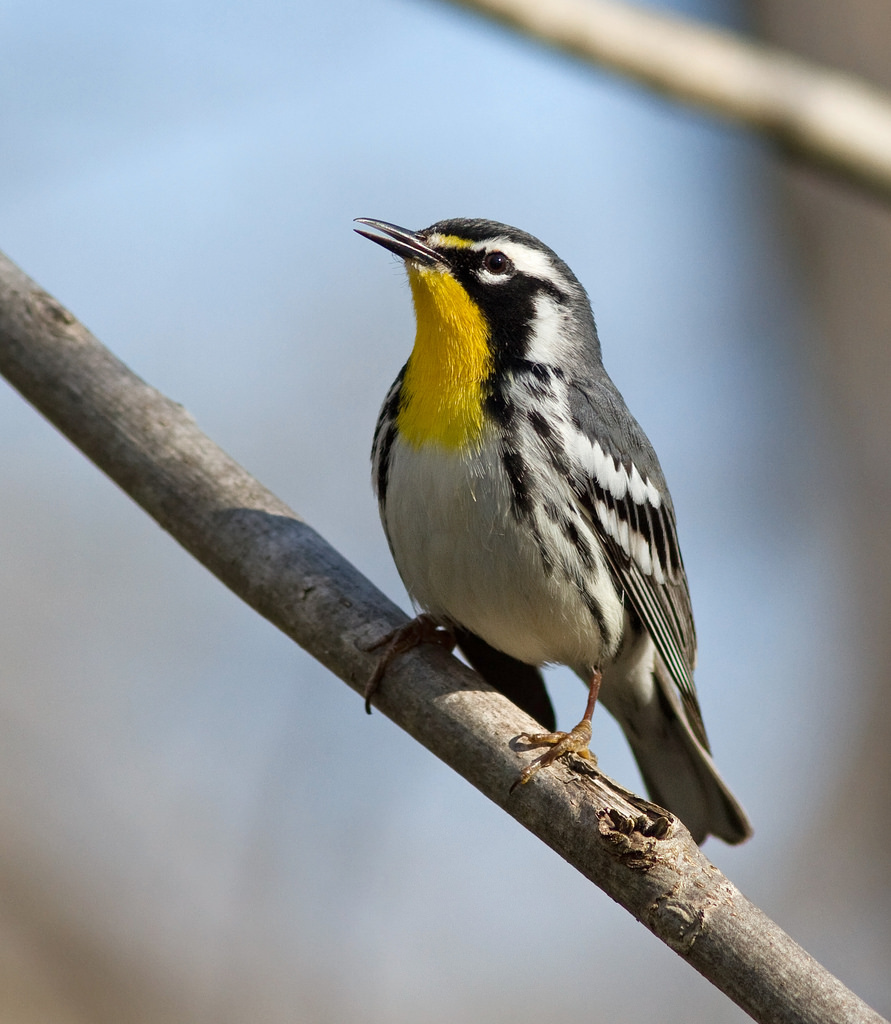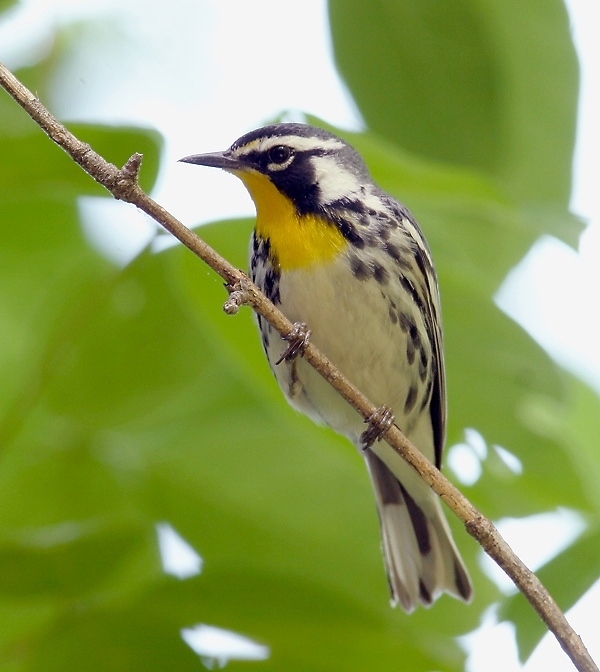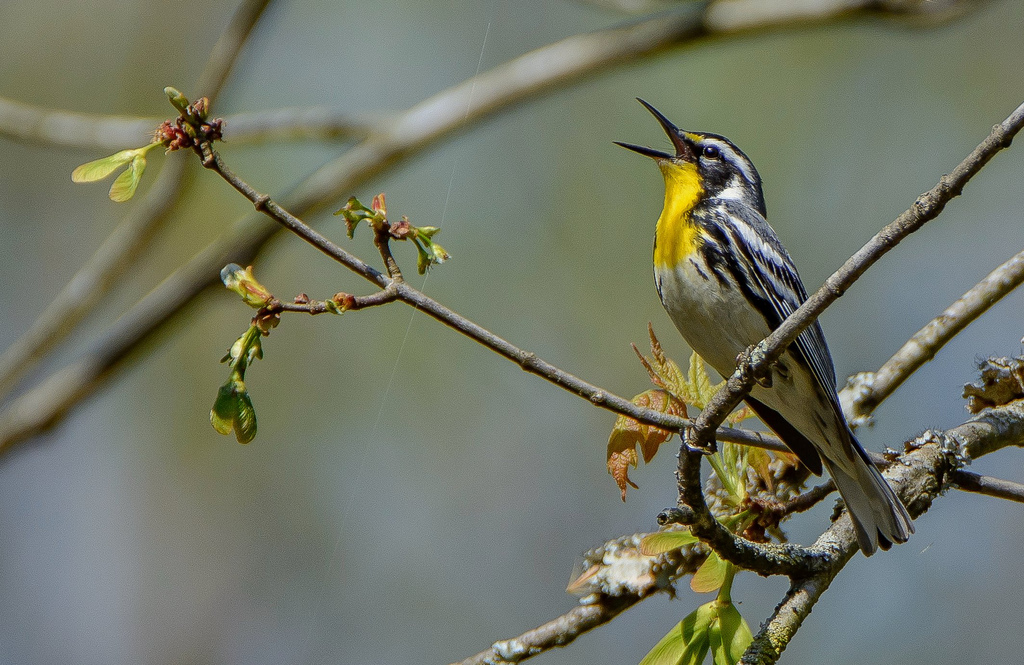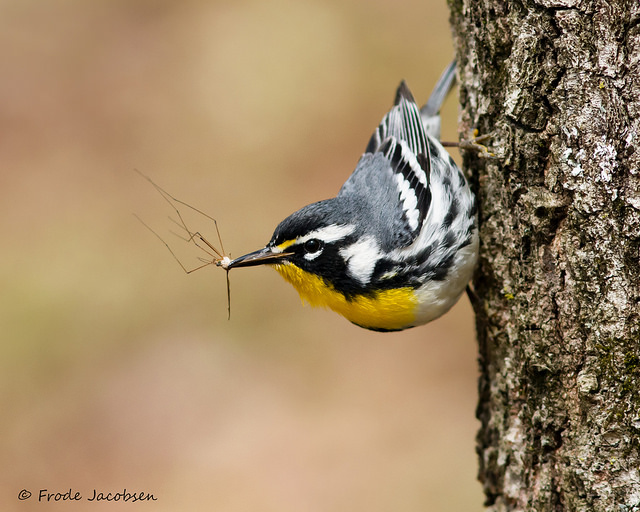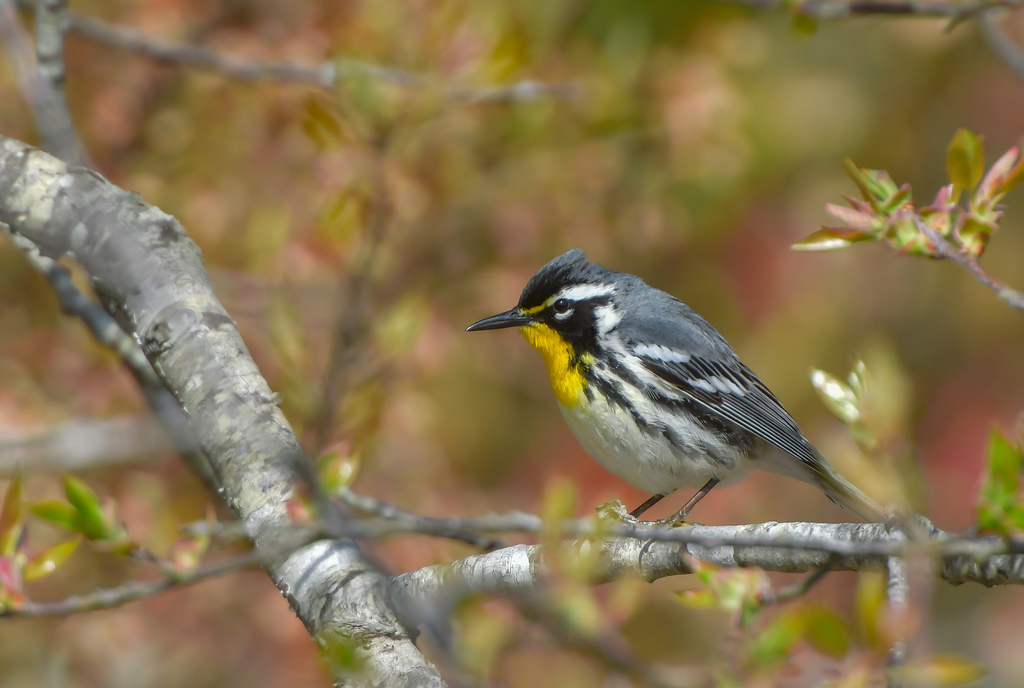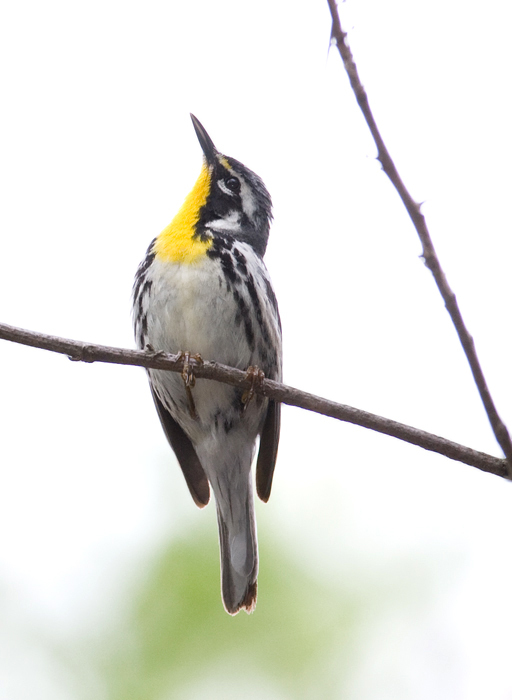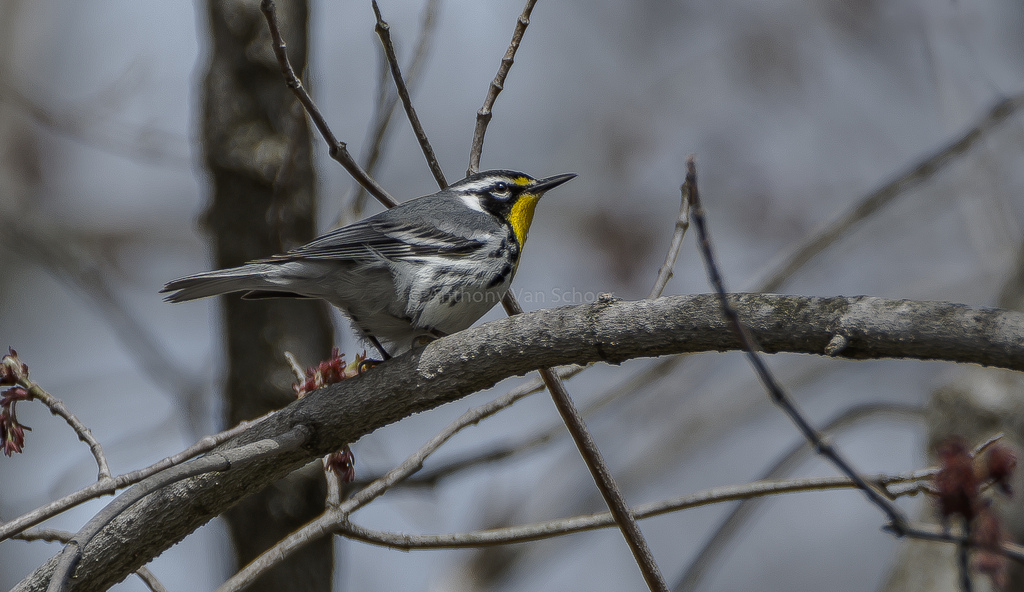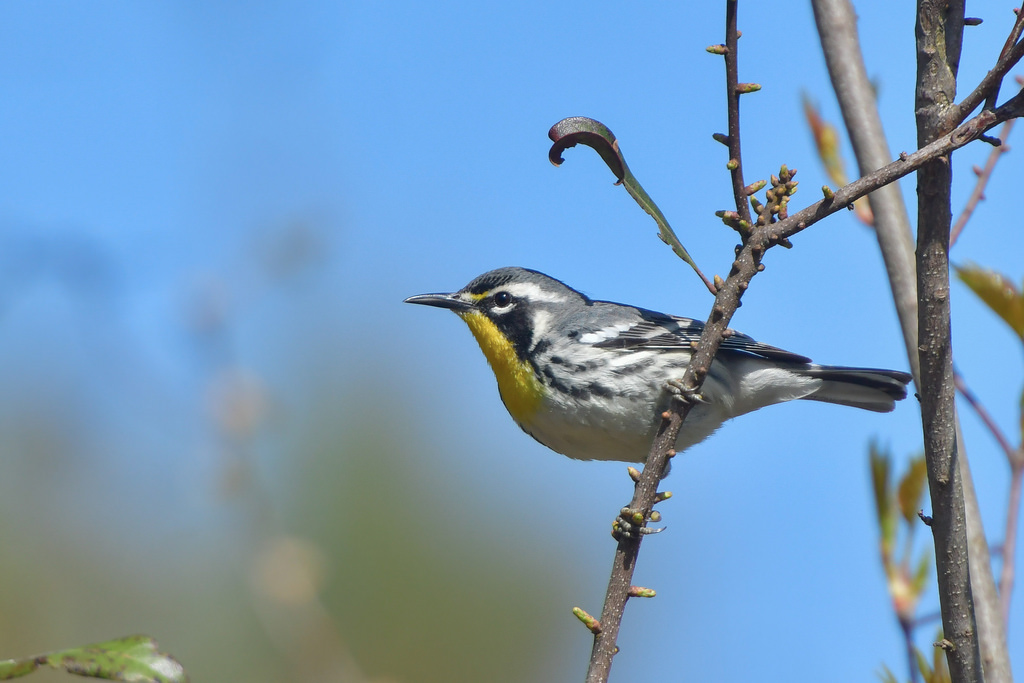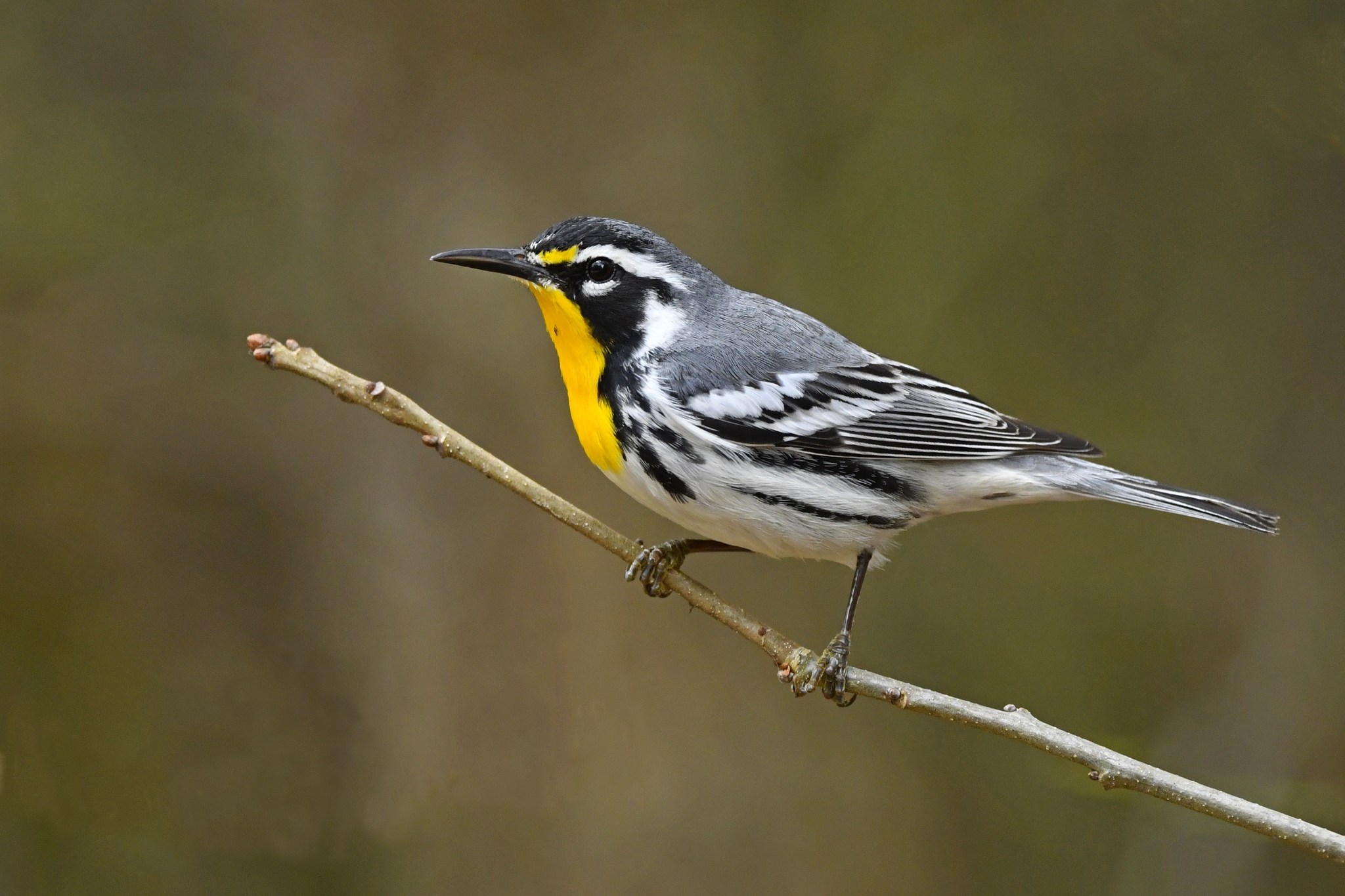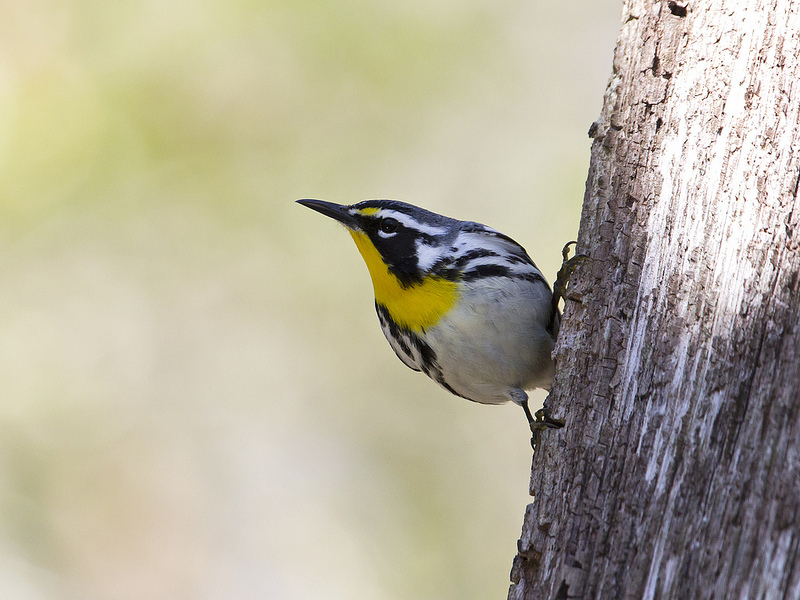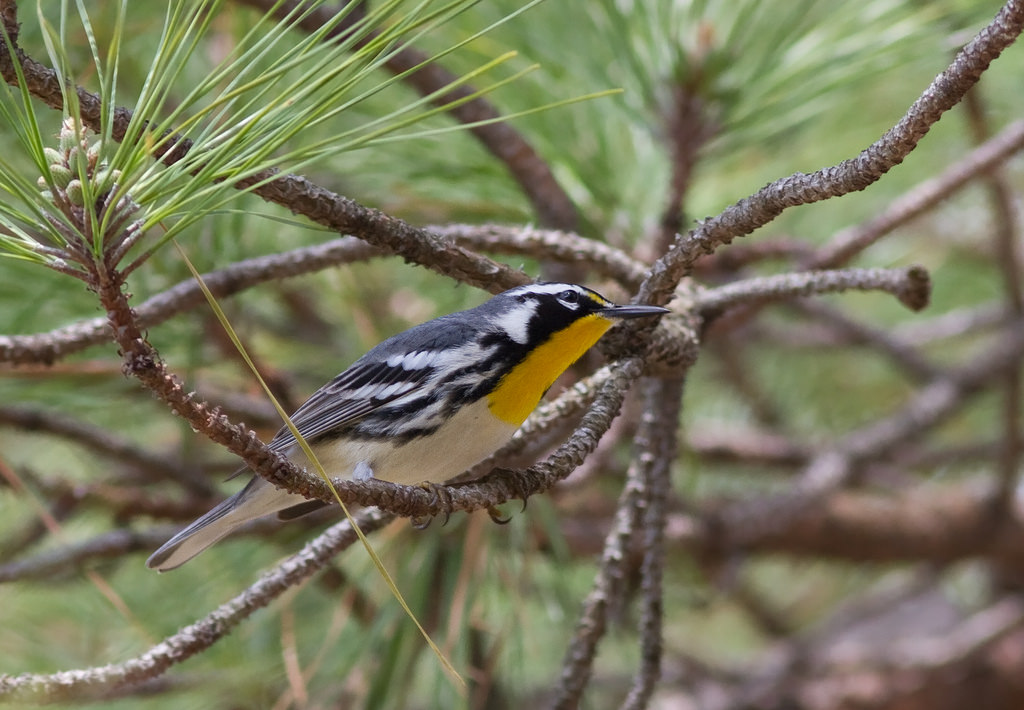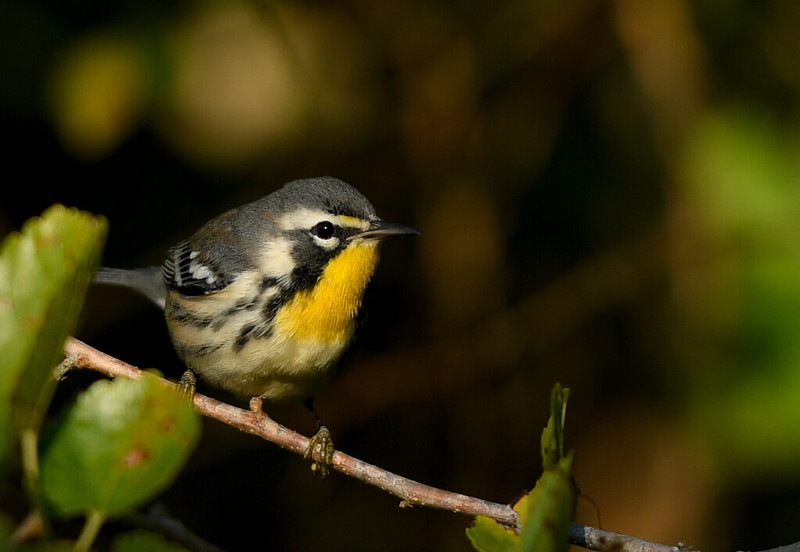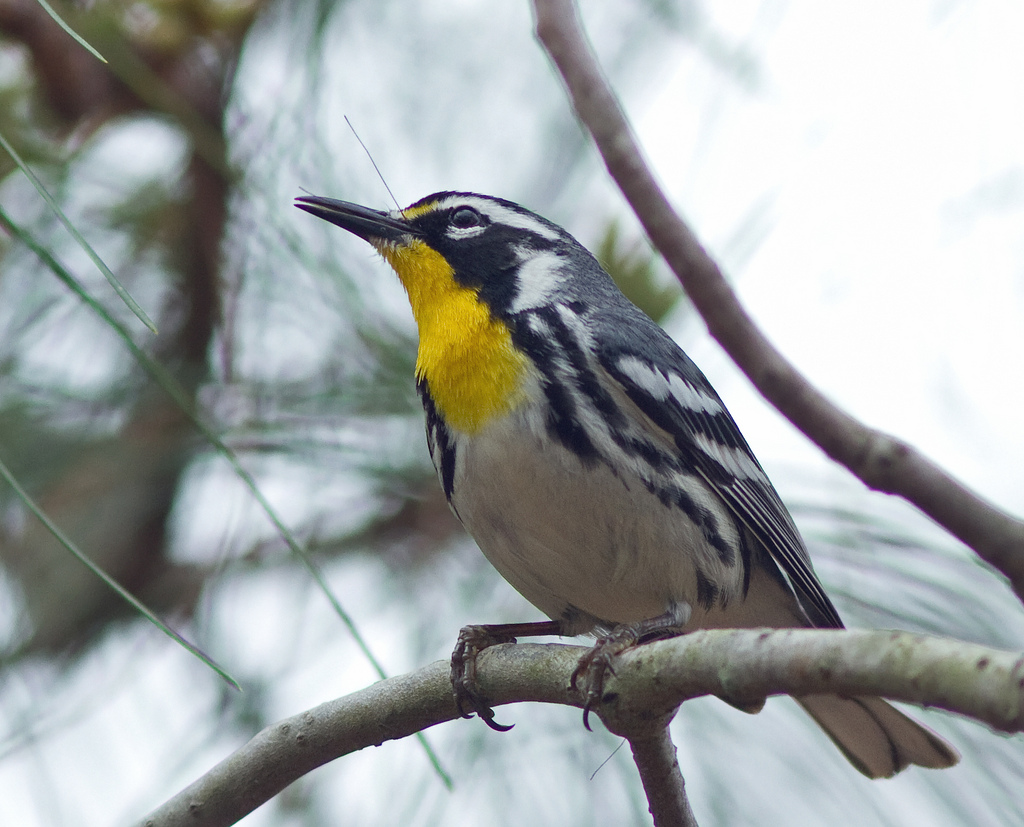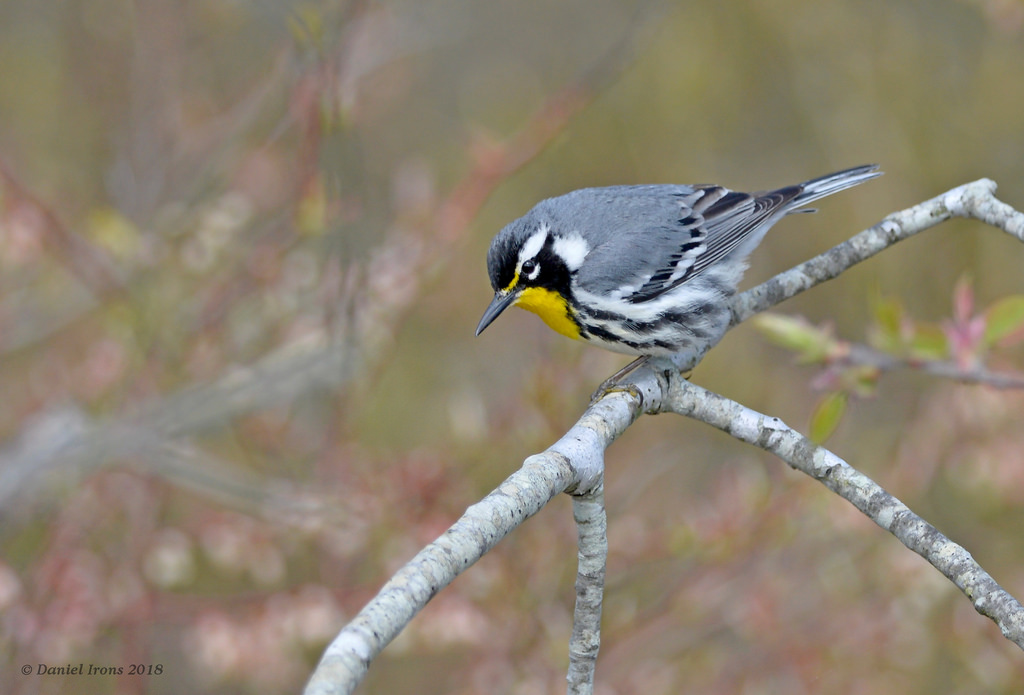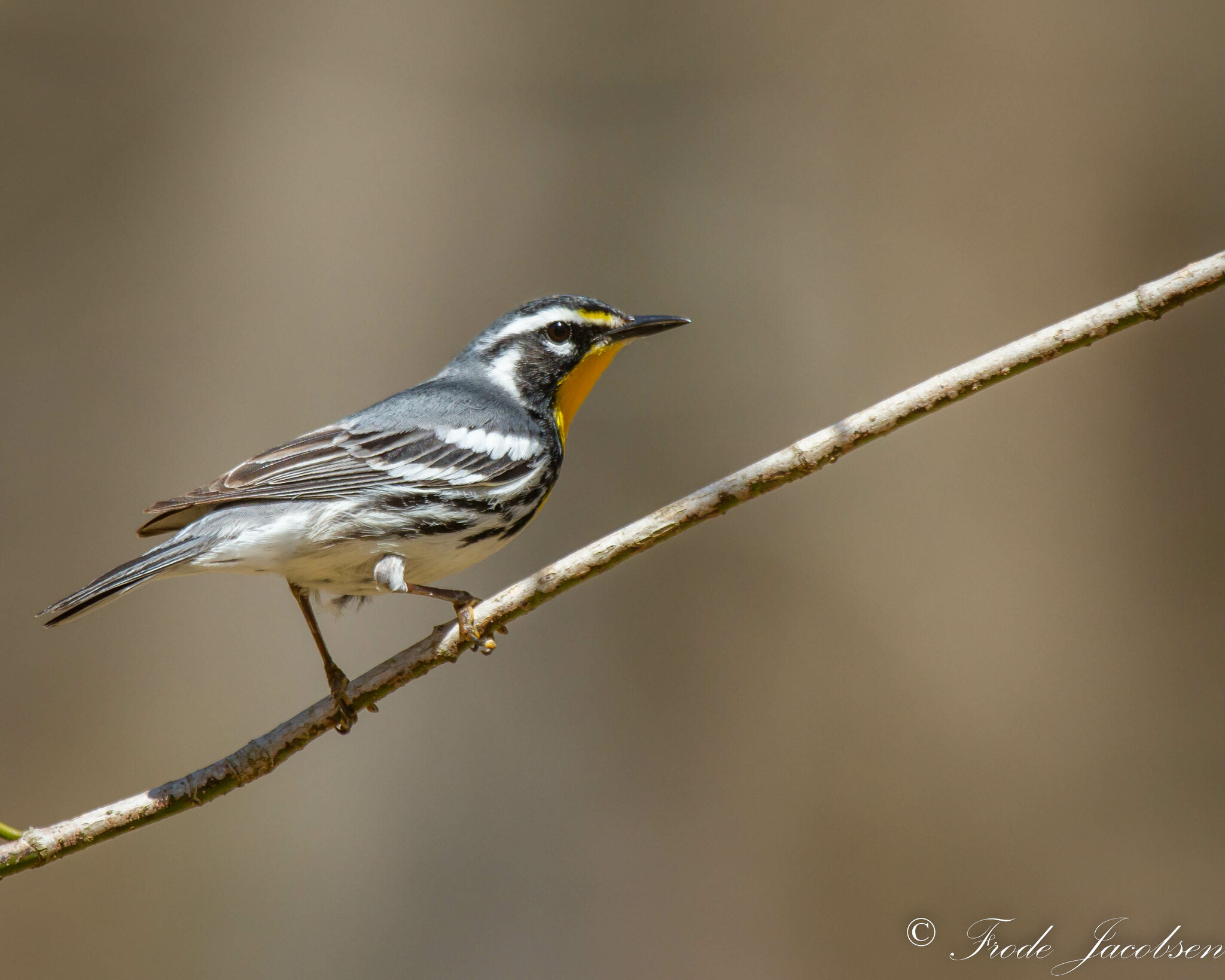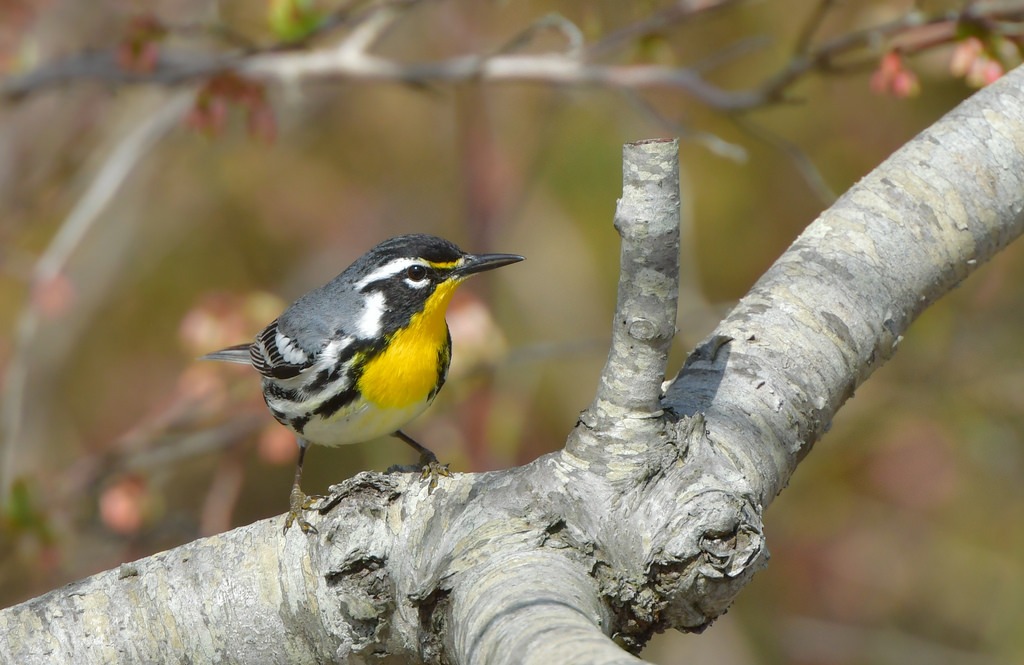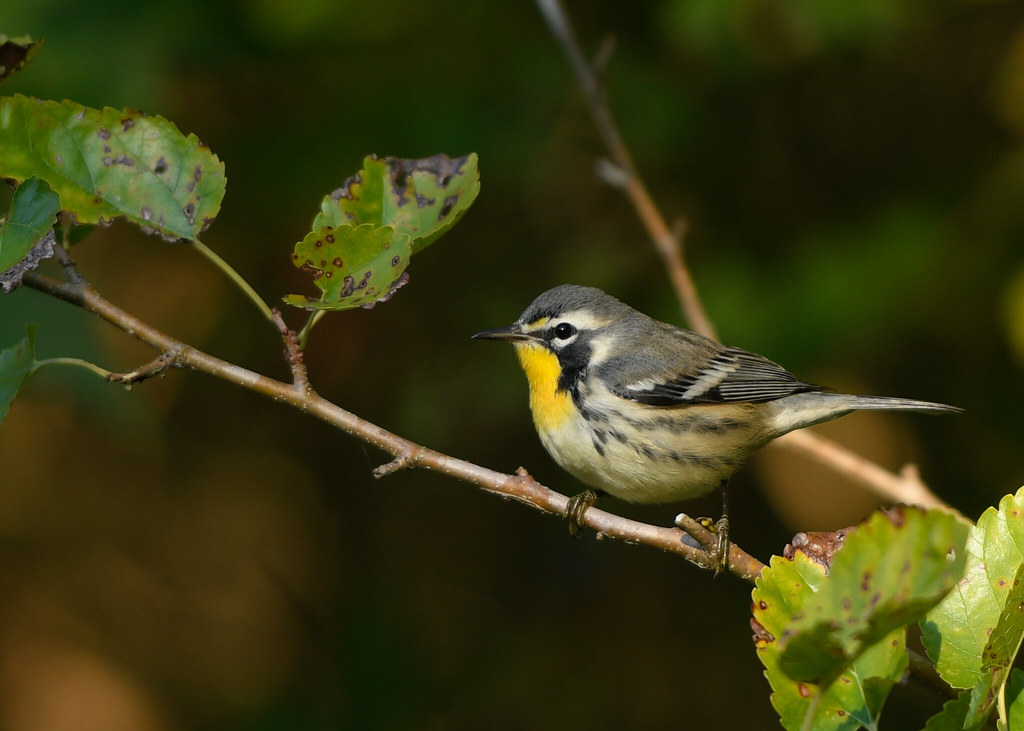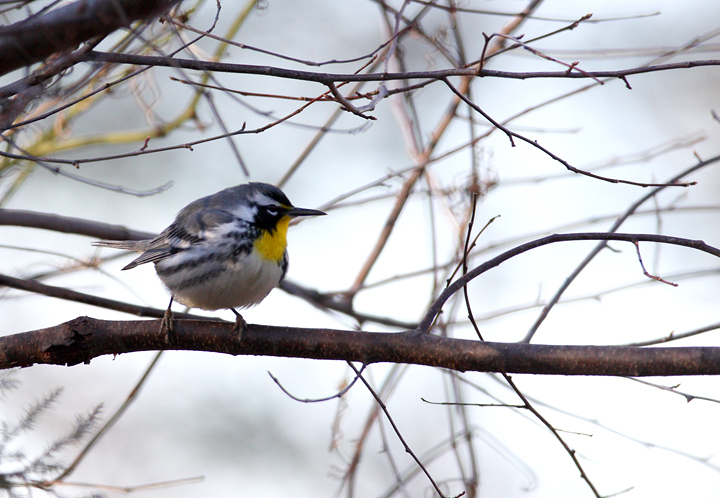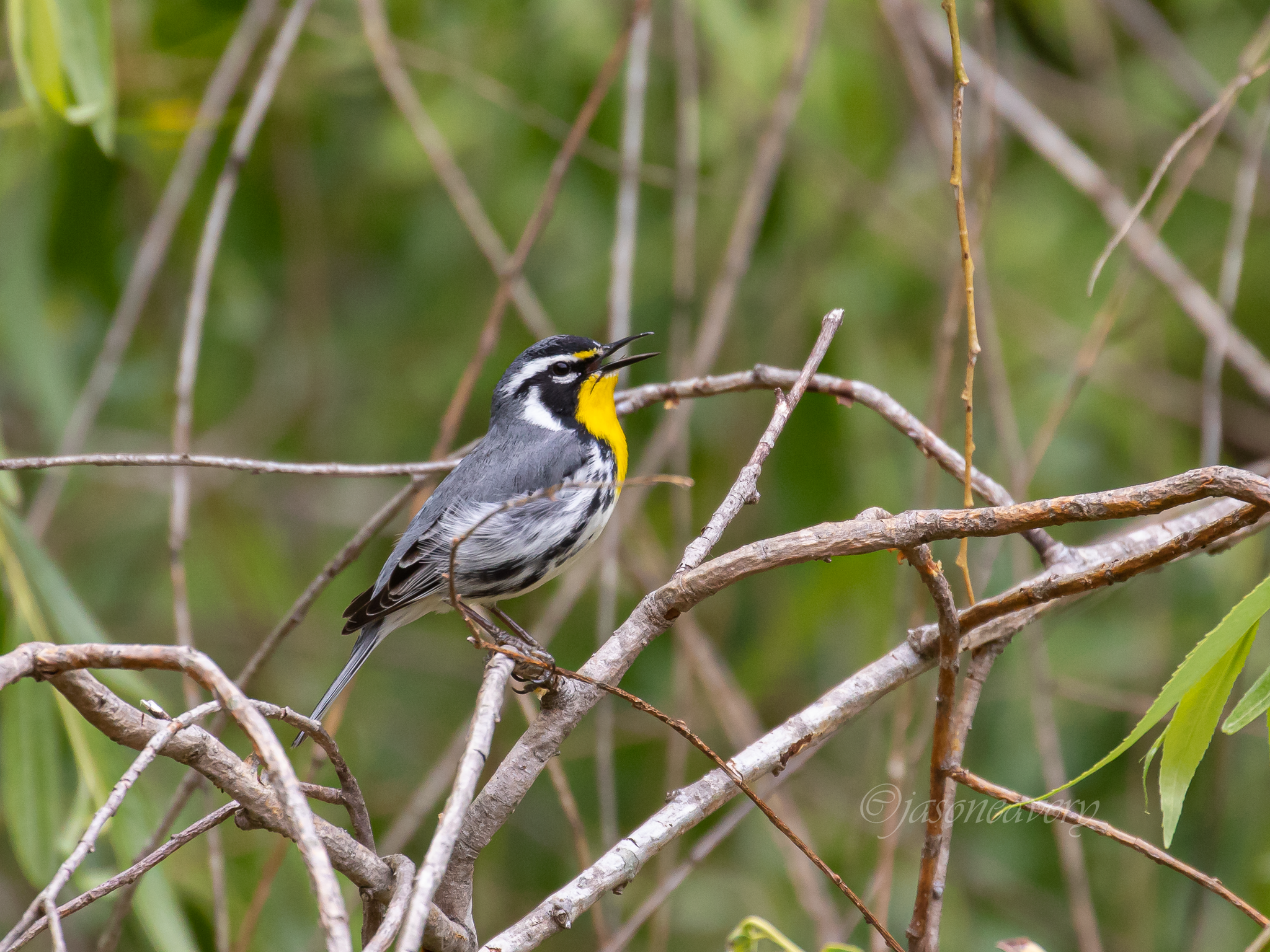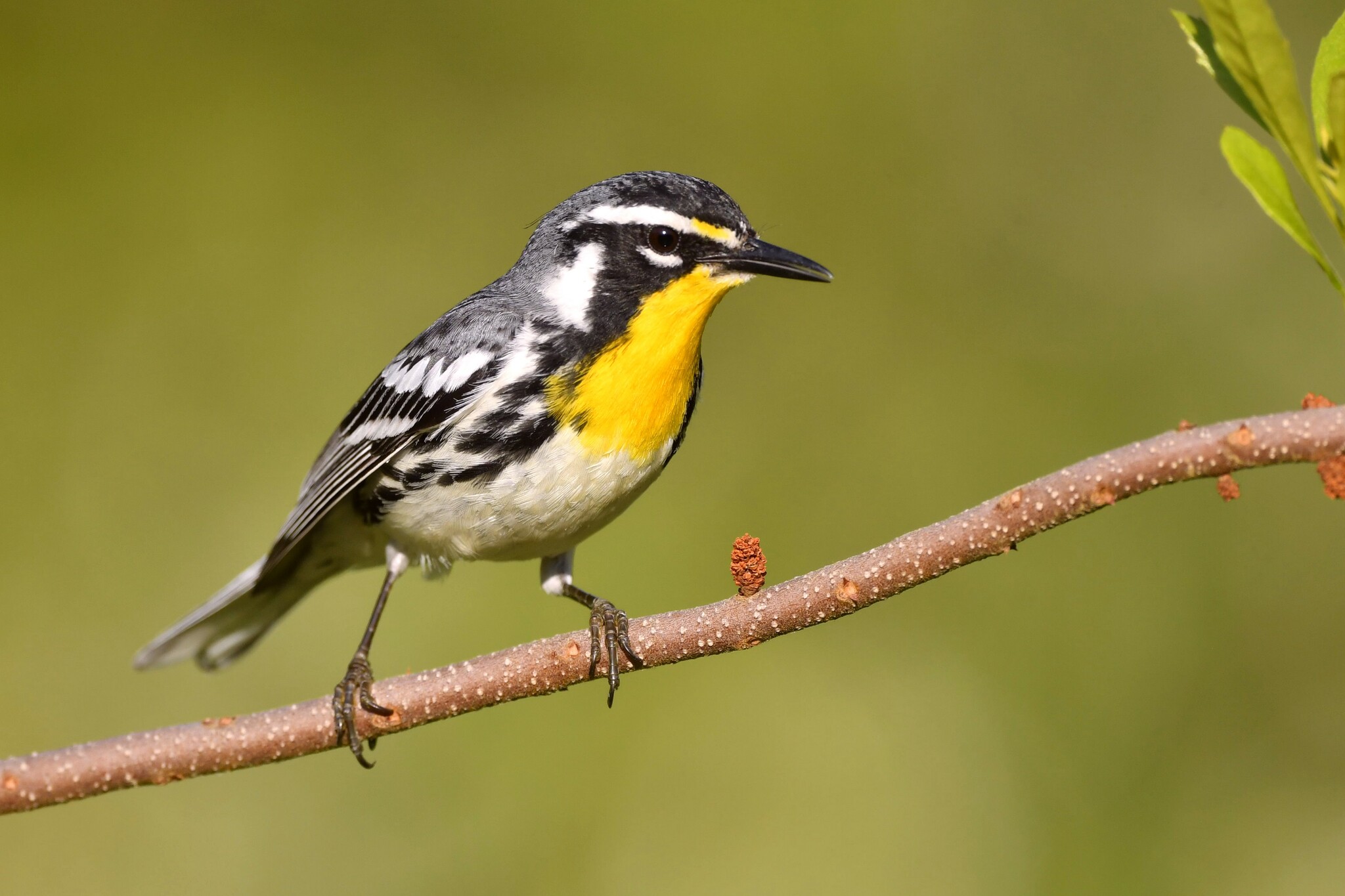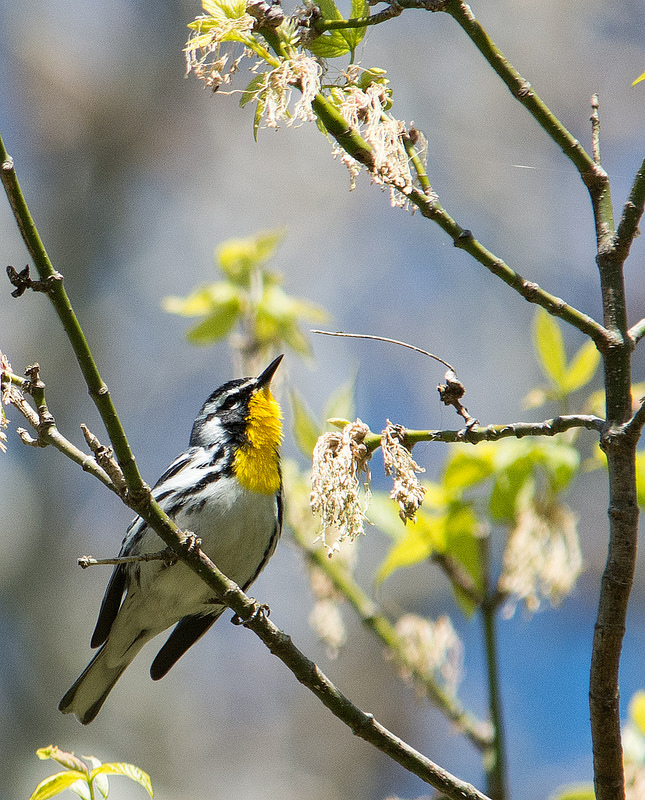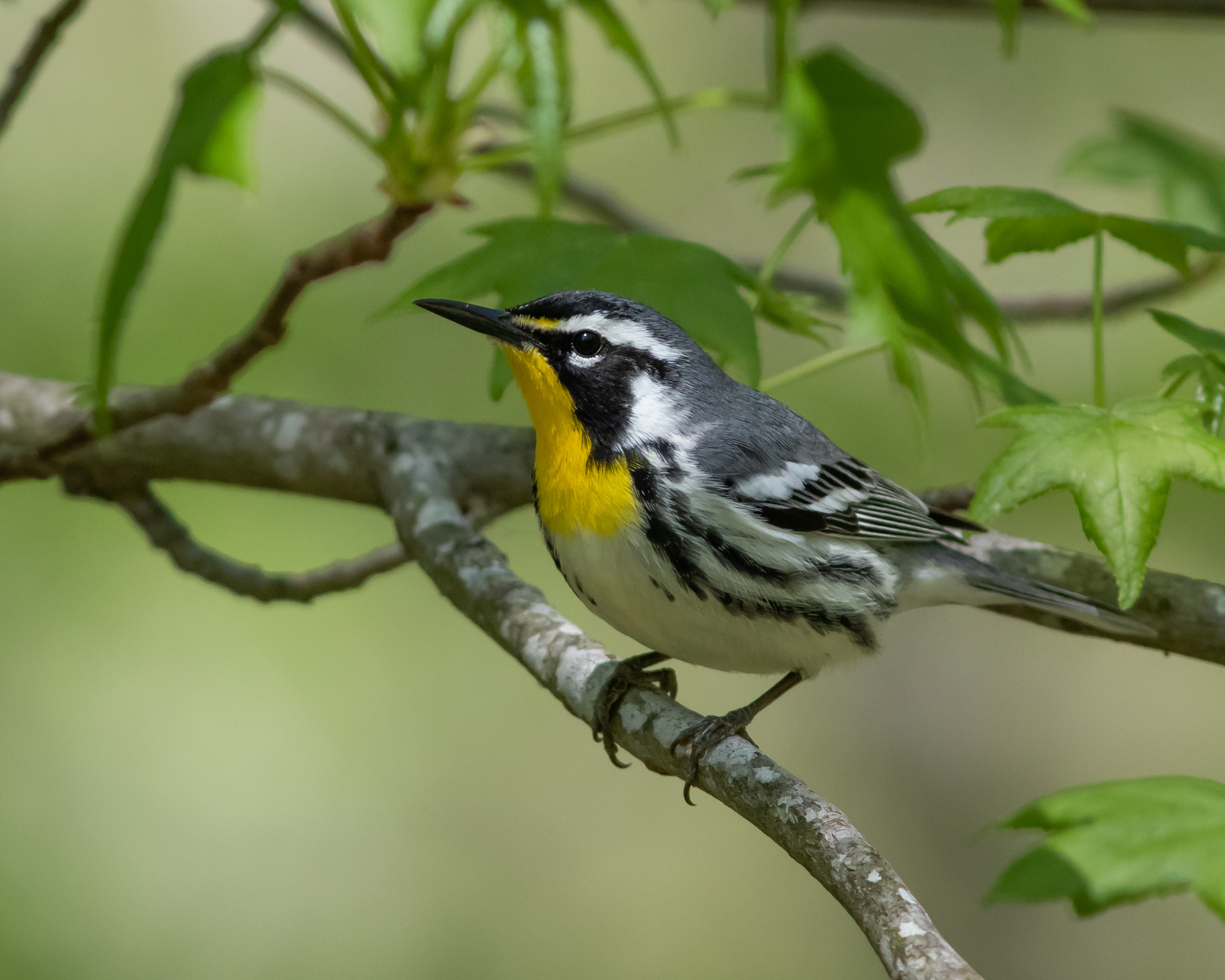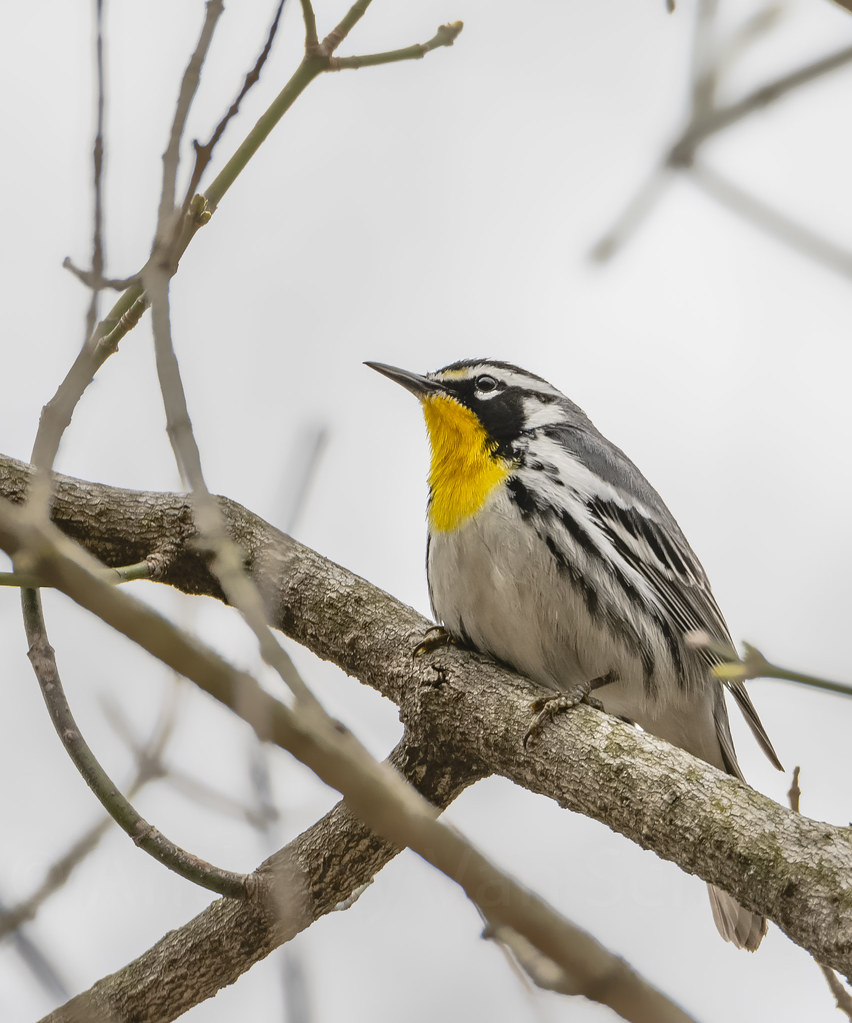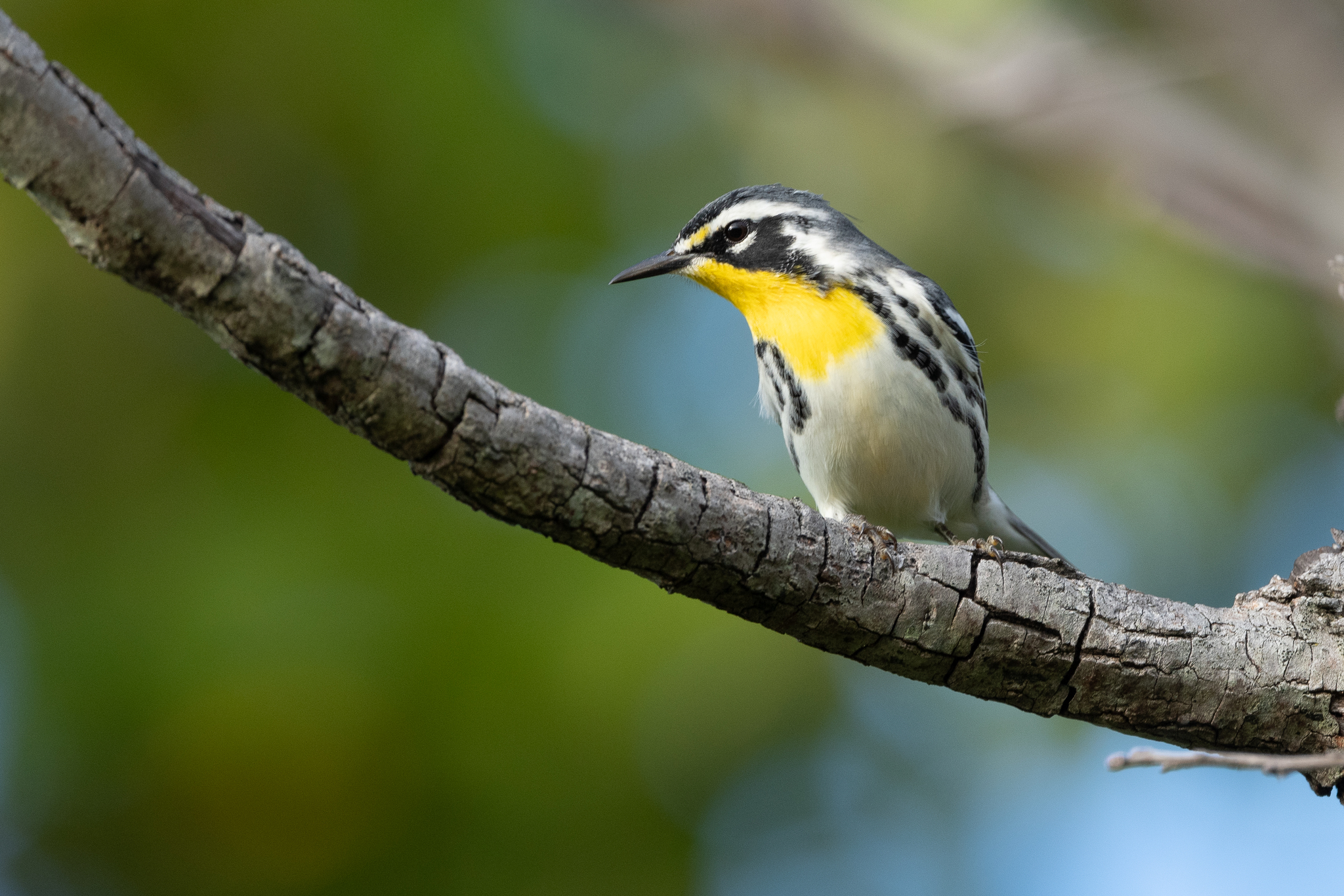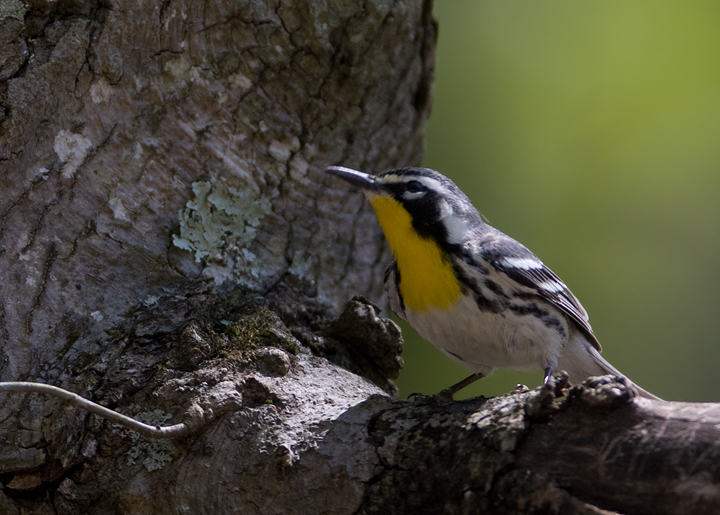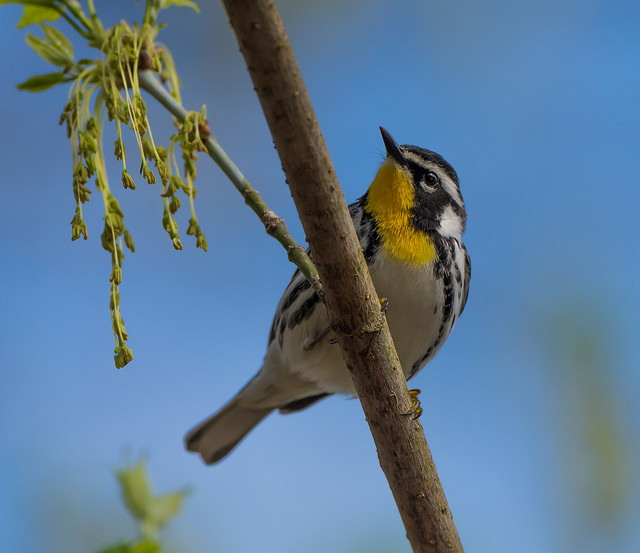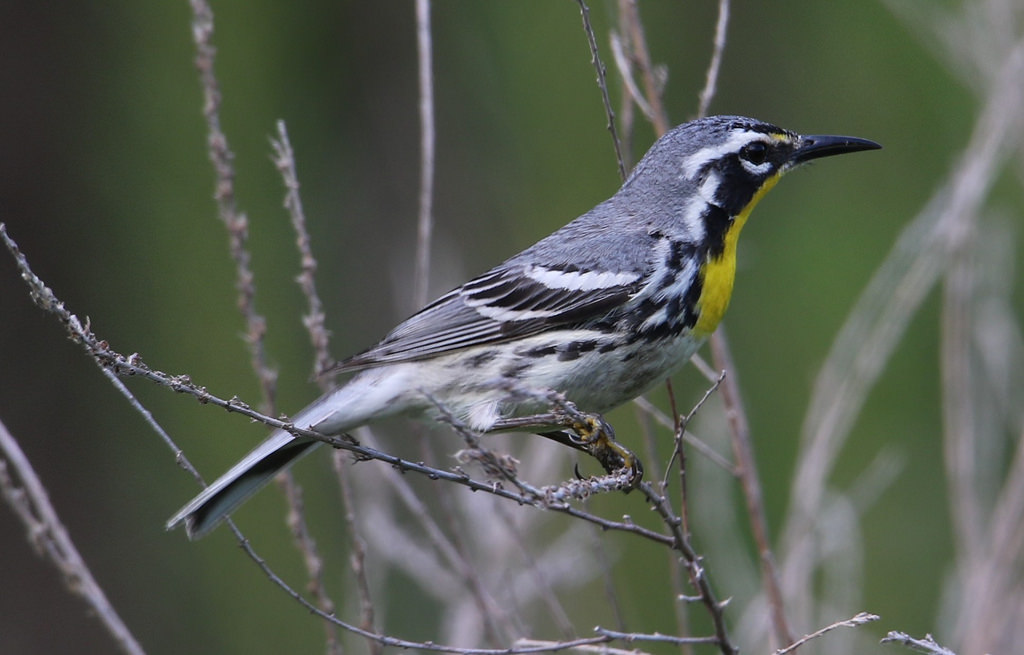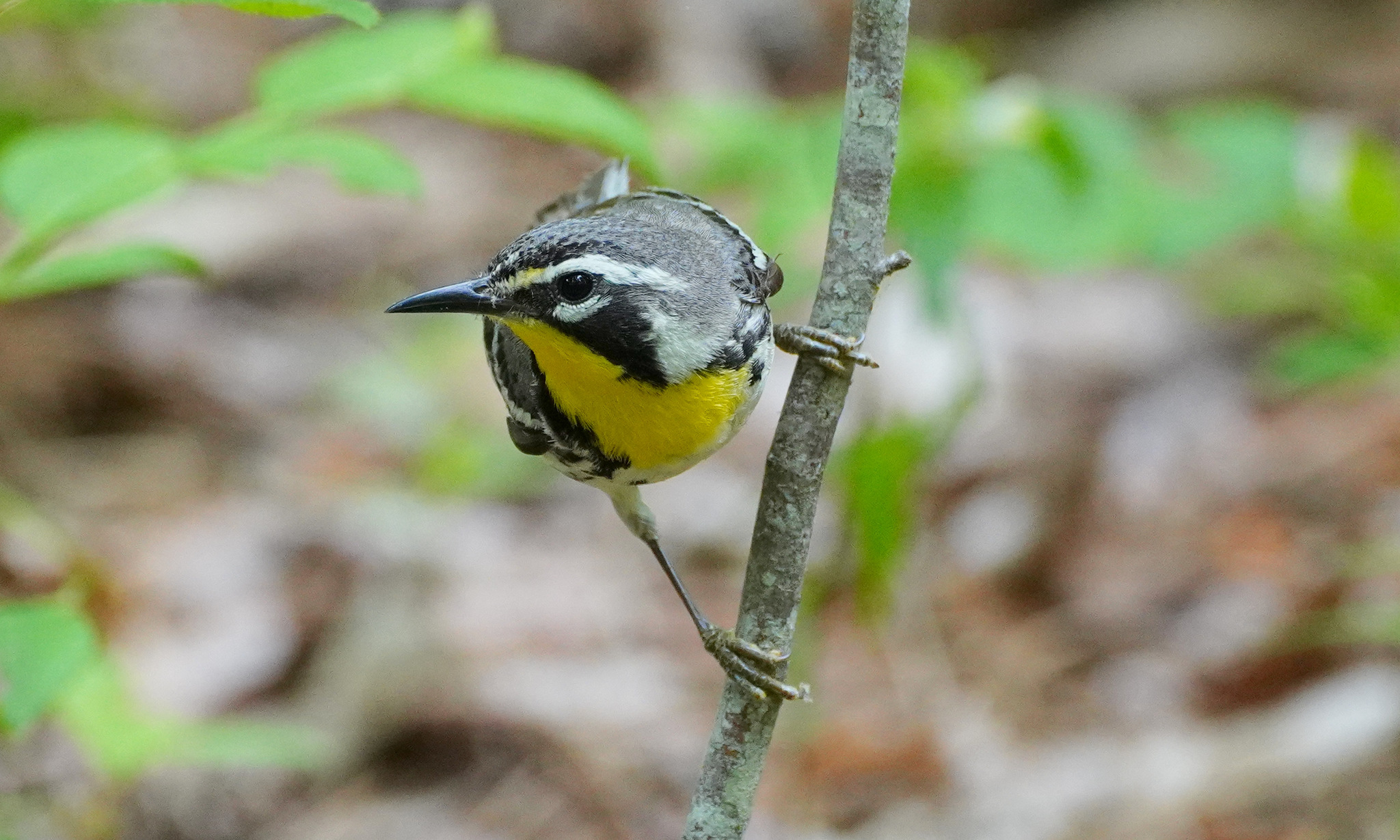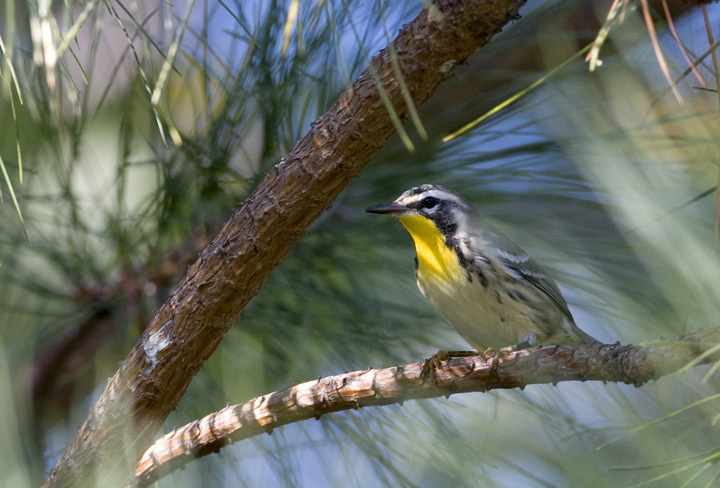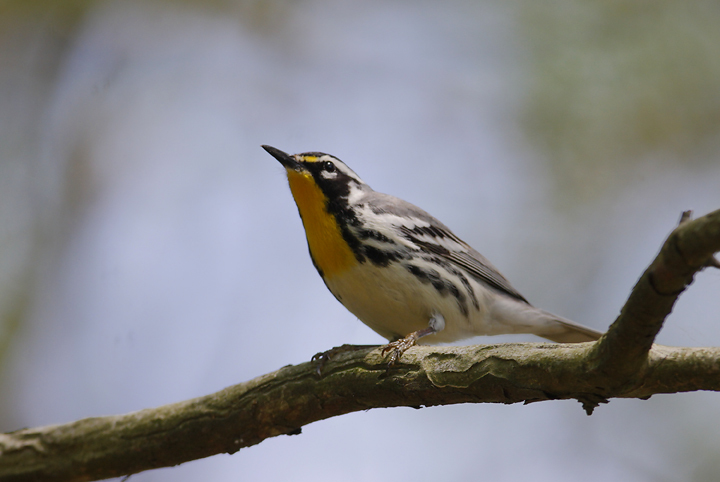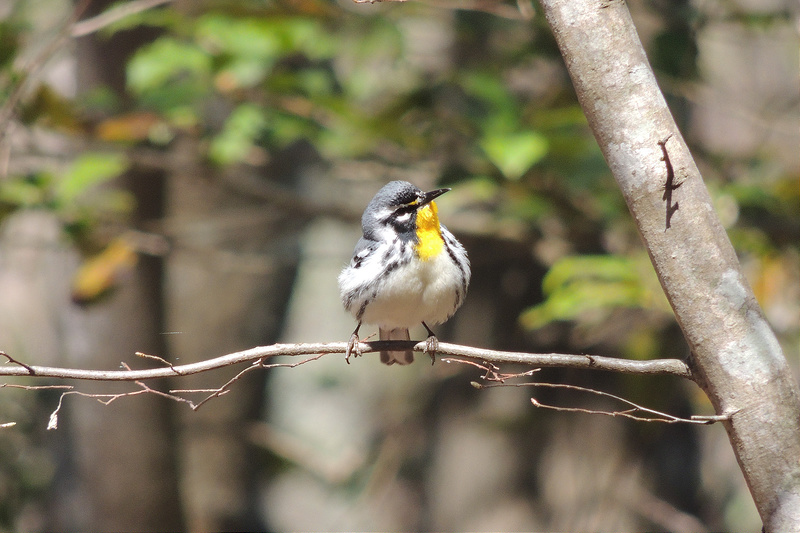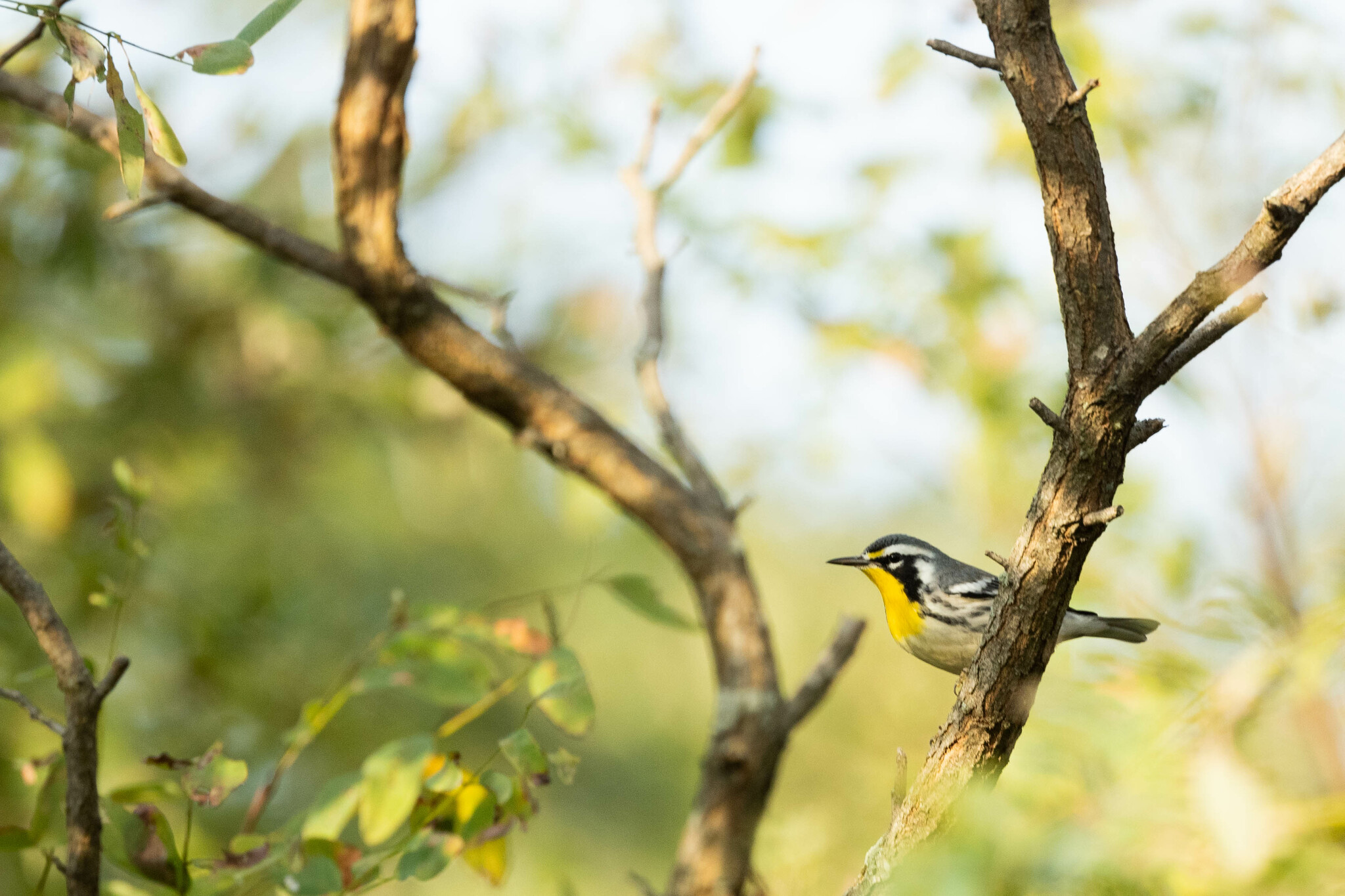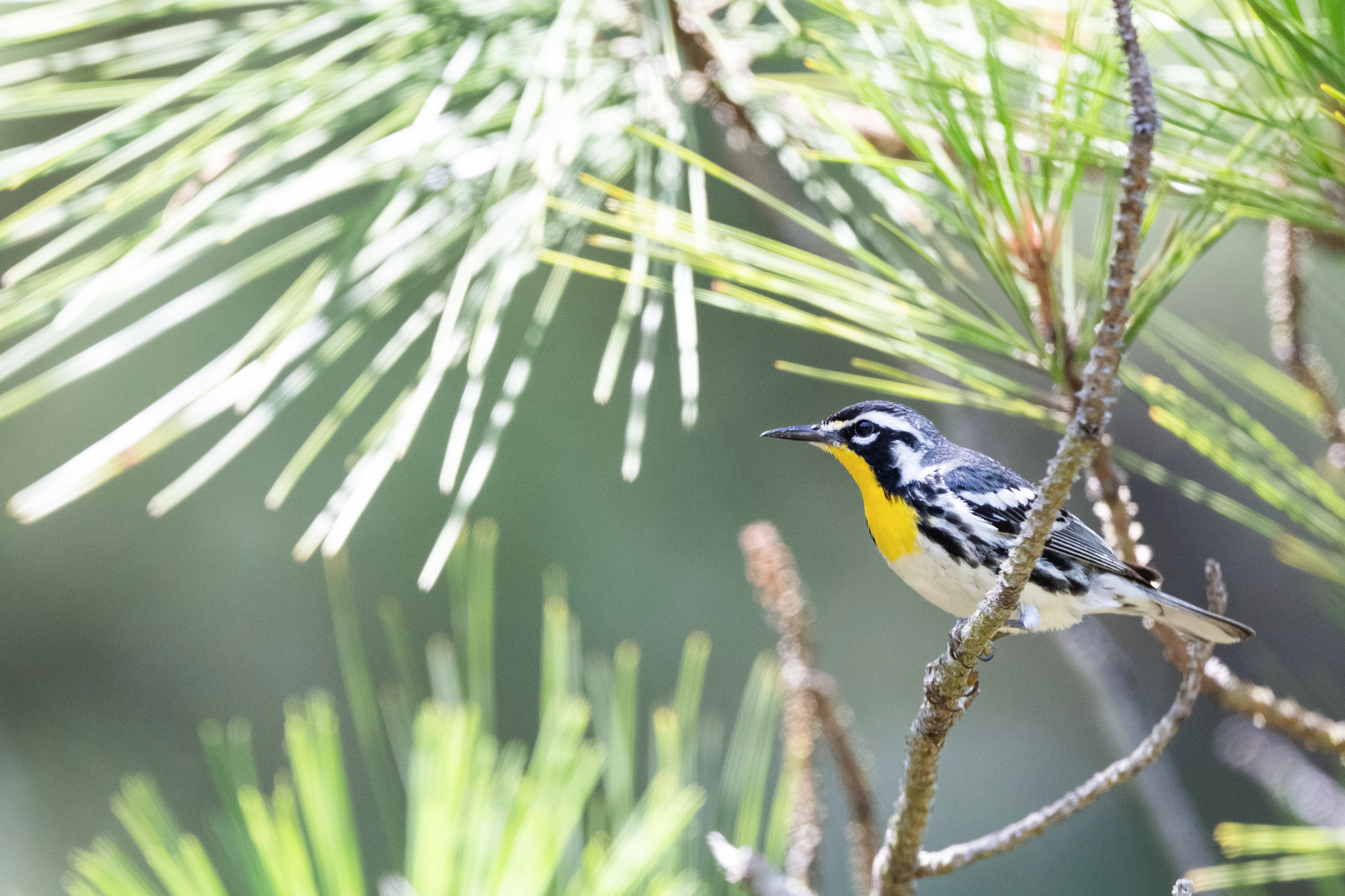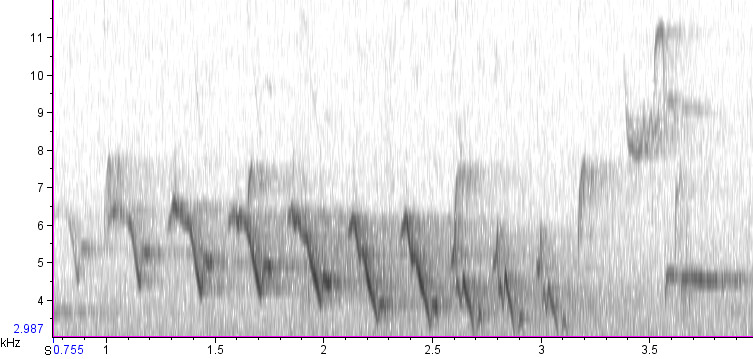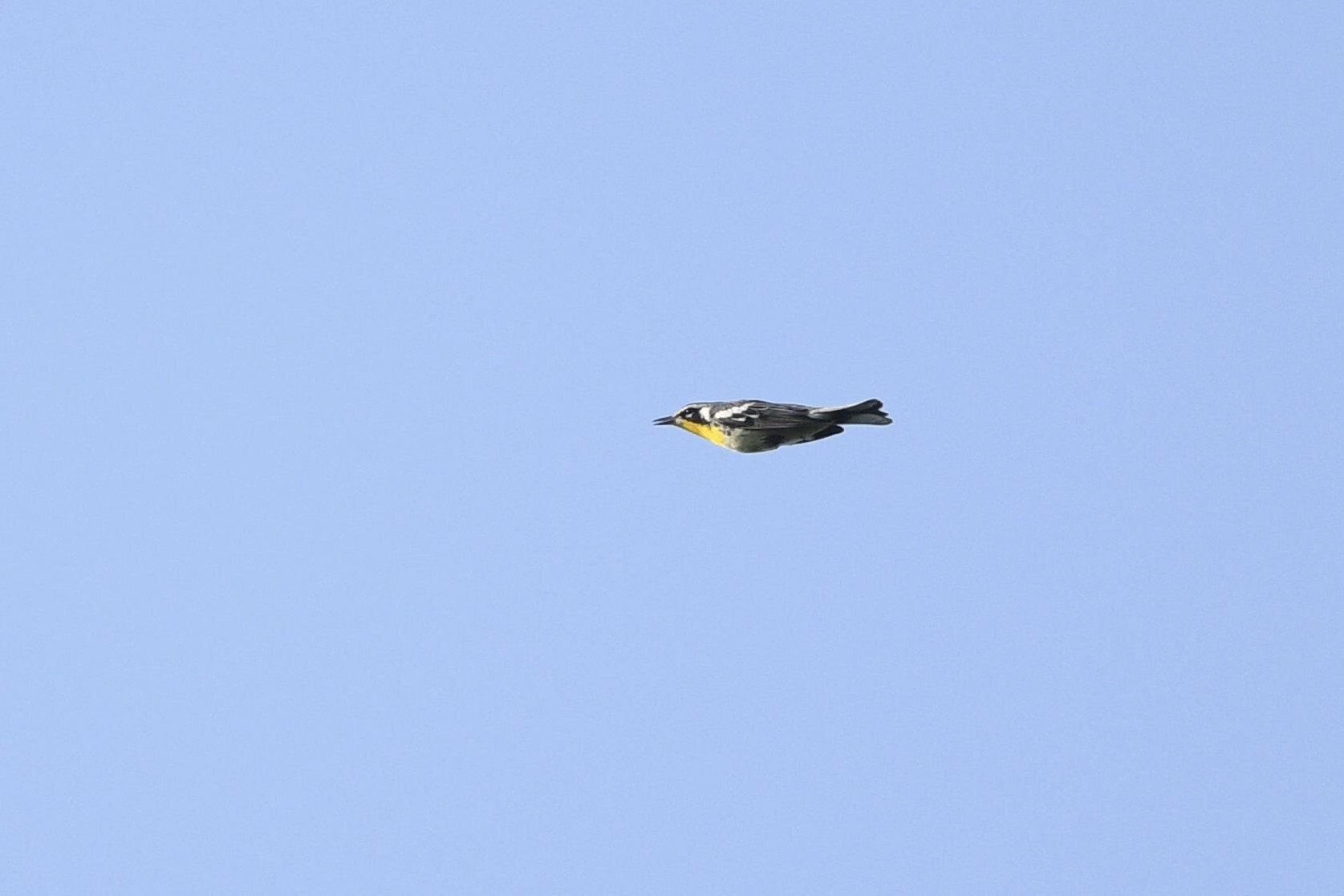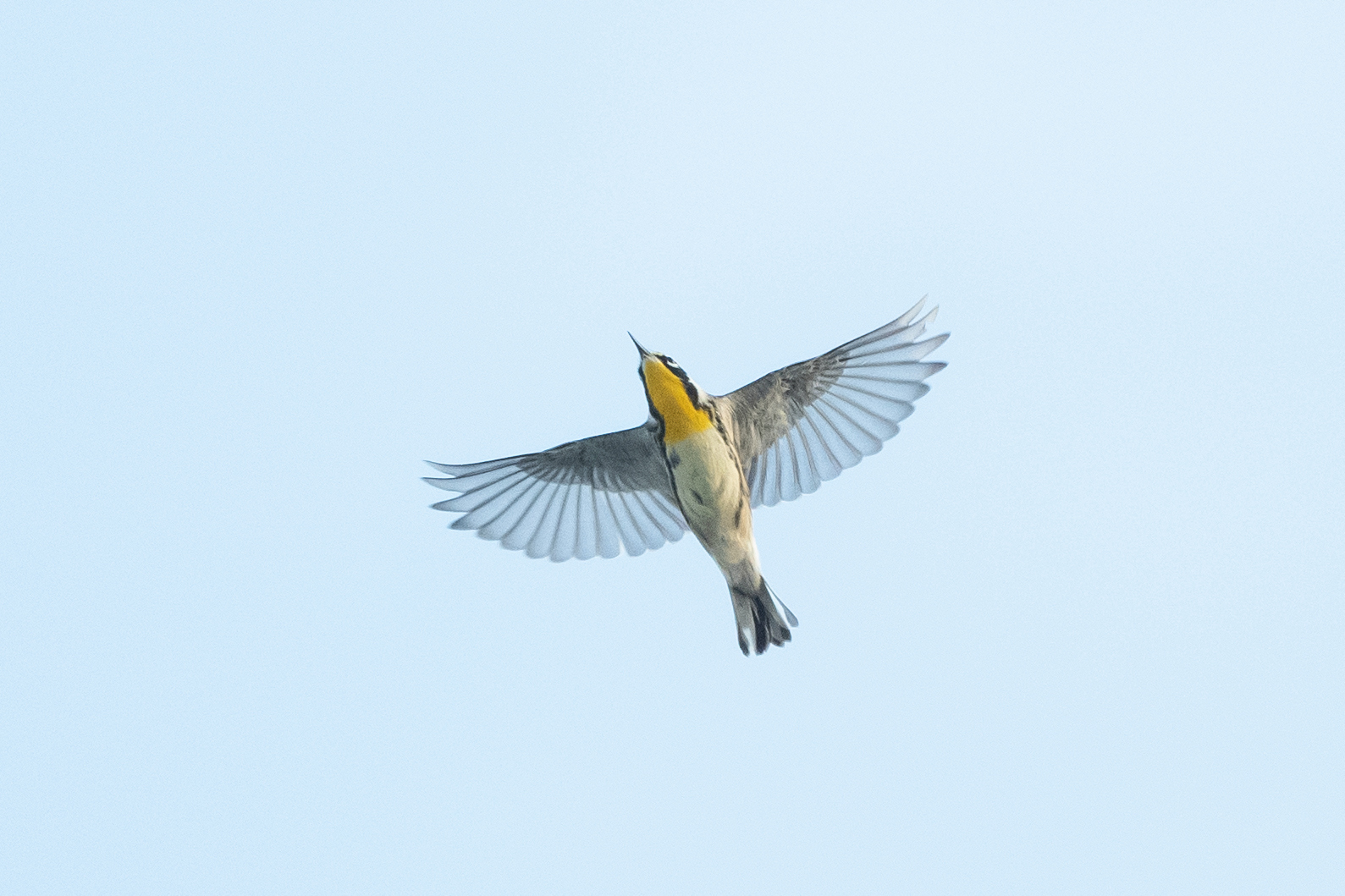Map Snapshot

























316 Records
Yellow-throated Warbler in Dorchester Co., Maryland (4/4/2024). (c) MarkinMD, some rights reserved (CC BY-NC). - markinmd via iNaturalist.
Status
Yellow-throated Warblers breed in southeastern North America and migrate south in the winter. They are one of the earliest warblers to arrive back in Maryland in the spring. These striking warblers occupy two very distinct habitats in the state, and are generally treated as two subspecies. The white-lored, shorter-billed birds that nest along the C&O Canal are American Sycamore specialists, while the yellow-lored, longer-billed birds on the coastal plain are Loblolly Pine specialists. Yellow-throated Warblers feed mainly along the trunks of trees. Arriving before deciduous trees have leafed out, the white-lored, shorter-billed subspecies finds food, mainly insects and spiders, deep in the crevices and beneath the loose shingles that form in sycamore trees. The Loblolly Pine specialists glean insects and spiders from the bark of this evergreen conifer. (Many other warbler species do not return to Maryland until deciduous trees have leafed out and are attracting the leaf-eating insects that these warblers depend on for food.)
Where To Find
In American Sycamore trees along the C&O Canal and in Loblolly Pine trees on the Coastal Plain.
Relationships
Depending on the subspecies, Yellow-throated Warblers find food mainly on either American Sycamore or Loblolly Pine.
Seasonality Snapshot
Source: Wikipedia
| Yellow-throated warbler | |
|---|---|

| |
| Scientific classification | |
| Domain: | Eukaryota |
| Kingdom: | Animalia |
| Phylum: | Chordata |
| Class: | Aves |
| Order: | Passeriformes |
| Family: | Parulidae |
| Genus: | Setophaga |
| Species: | S. dominica
|
| Binomial name | |
| Setophaga dominica | |

| |
| Range of S. dominica Breeding range Year-round range Wintering range
| |
| Synonyms | |
| |
The yellow-throated warbler (Setophaga dominica) is a small migratory songbird species in the New World warbler family (Parulidae)[2] found in temperate North America.
Description
[edit]

In summer, male yellow-throated warblers display grey upperparts and wings, with double white wing bars. Their throats are yellow, and the remainder of their underparts are white, and are streaked with black on the flanks. Their heads are strongly patterned in black and white, with a long supercilium; the different subspecies may display yellow and white superciliums. Remiges and rectrices are black.[2] They measure 14 cm (5.5 in) long.[3]
Other plumages of these birds – females immatures and non-breeding males – resemble washed-out versions of the summer males; in particular they have a less crisply defined strong head pattern. They also have less bright yellows, and dark grey feathers instead of black ones in the body plumage. Compared to many other New World warblers, sexual dimorphism is slight.[2]
The males' songs are clear, descending whistles. The calls are high sees or sharp chips.[2]
Measurements:[4]
- Length: 5.1–5.5 in (13–14 cm)
- Weight: 0.3–0.4 oz (8.5–11.3 g)
- Wingspan: 8.3 inches (21 cm)
Taxonomy
[edit]Yellow-throated warblers will occasionally hybridize with northern parulas (Setophaga americana), resulting in a hybrid species known as Sutton's warblers.[5] Sutton's warblers lack the black streaks bordering the breast indicative of yellow-throated warblers, and have a suffused greenish-yellow wash on their back, which is also not indicative of yellow-throated warblers.[6] The Sutton's warbler was first discovered in 1940 in West Virginia.[7]
Distribution and habitat
[edit]These birds breed in southeastern North America, and their breeding ranges extend from southern Pennsylvania and northern Missouri, to the Gulf of Mexico. One subspecies, from northwest Florida, is resident all year round. The other populations of this species are migratory, wintering at the Gulf Coast, eastern Central America, and the Caribbean. Vagrant wintering birds are sometimes seen in northernmost South America.[2][8]
In the United States, the yellow-throated warbler's range differs from typical Setophaga warblers because they have a more expansive resident population in the South than other Setophaga warblers. Moreover, their breeding range is more southerly, and their wintering range more is northerly, than the other warblers in the genus.[9] According to McKay et al., "[t]he near absence of the species from the lower Piedmont of the Carolinas and Georgia ... presents a puzzle."[9]
The yellow-throated warbler is a woodland species with a preference for coniferous or swamp tree species, in which it preferably nests.
Diet
[edit]They are insectivorous, but will include a considerable amount of berries and nectar in their diet outside the breeding season. Food is typically picked off tree branches directly, but flying insects may be caught in a brief hover.[2][10]
Breeding
[edit]These birds build cup-shaped nests which are built in trees, and are concealed amongst conifer needles or Spanish moss (Tillandsia usneoides). Their clutches consist of 3–5 (usually 4) eggs.[2]
References
[edit]- ^ BirdLife International (2018). "Setophaga dominica". IUCN Red List of Threatened Species. 2018: e.T22724793A132177086. doi:10.2305/IUCN.UK.2018-2.RLTS.T22724793A132177086.en. Retrieved 11 November 2021.
- ^ a b c d e f g Jon Curson; David Quinn & David Beadle (1994). New World Warblers. London: Christopher Helm. ISBN 0-7136-3932-6.
- ^ Scott, Shirley L., ed. (1994). Field Guide to the Birds of North America (2nd ed.). The National Geographic Society. pp. 366–367. ISBN 0-87044-692-4.
- ^ "Yellow-throated Warbler Identification, All About Birds, Cornell Lab of Ornithology". www.allaboutbirds.org. Retrieved 2020-09-30.
- ^ Anich, Nicholas; Swelstad, Jack; Pierce, Brian (2012). "The First Report of Sutton's Warbler(Northern Parula × Yellow-throated Warbler) in Wisconsin". The Passenger Pigeon. 74 (2): 149–154.
- ^ Devore, Leland S. "Sutton's Warbler in West Virginia" (PDF). Retrieved December 27, 2022.
- ^ Bent, Arthur Cleveland (1963). Life histories of North American wood warblers. New York: Dover. ISBN 0-486-21153-3. OCLC 782188.
- ^ Ralf Strewe & Cristobal Navarro (2004). "New and noteworthy records of birds from the Sierra Nevada de Santa Marta region, north-eastern Colombia" (PDF). Bulletin of the British Ornithologists' Club. 124 (1): 38–51. Archived from the original (PDF) on 2005-12-31. Retrieved 2020-03-17.
- ^ a b McKay, Bailey; Hall, George A. (2020). "Yellow-throated Warbler (Setophaga dominica), version 1.0". Birds of the World. doi:10.2173/bow.yetwar.01.
- ^ Storrs L. Olson; Helen F. James & Charles A. Meister (1981). "Winter field notes and specimen weights of Cayman Island Birds". Bulletin of the British Ornithologists' Club. 101 (3): 339–346. hdl:10088/6535.
External links
[edit]- "Yellow-throated warbler media". Internet Bird Collection.
- Yellow-throated warbler photo gallery at VIREO (Drexel University)
- Yellow-throated warbler species account at Neotropical Birds (Cornell Lab of Ornithology)
- "Yellow-throated warbler bird sound". Florida Museum of Natural History.
